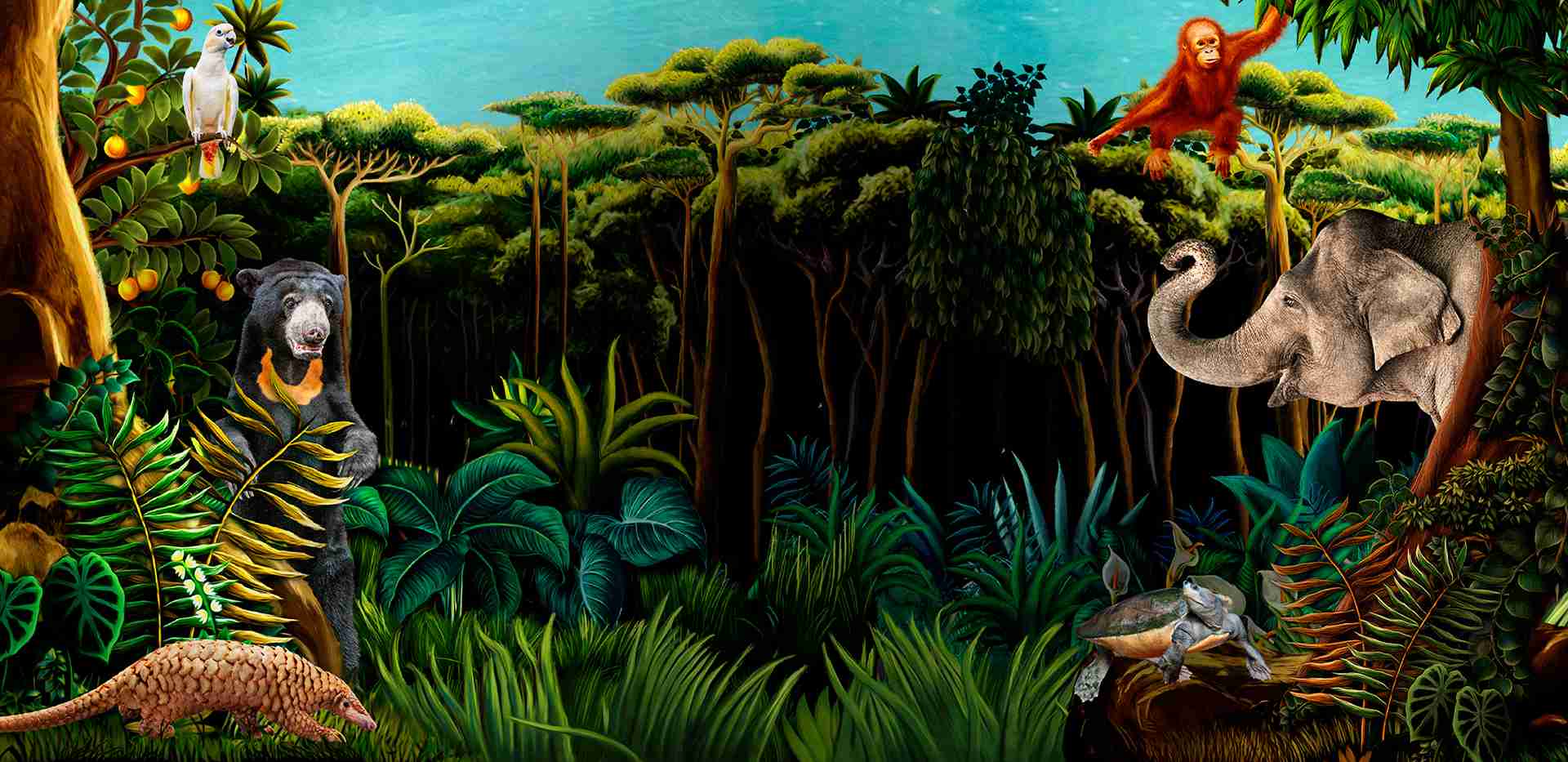Indian rhino brothers debut at Night Safari's new exhibit
28 APR 2021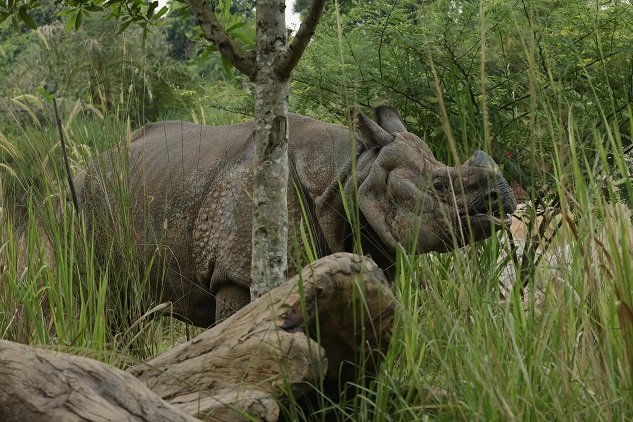
7-year-old male Indian rhino Thulie explores his surroundings in Night Safari’s new exhibit, planted with trees native to India and tall grasses to simulate the grassland habitat of his species. Thulie and Newari will make their official exhibit debut in Night Safari on 29 April 2021, where guests will be able to see them while on their tram journey or the walking trail.
PHOTO CREDITS: WILDLIFE RESERVES SINGAPORE

4-year-old male Indian rhino Newari takes a dip in the pool in the new exhibit
at Night Safari. The exhibit comes with a large central pool and smaller mud
pools for the water-loving rhinos to wallow and keep cool.
PHOTO CREDITS: WILDLIFE RESERVES SINGAPORE
Hailing from Al Bustan Zoological Centre in the United Arab Emirates (UAE), Thulie and Newari are half-siblings, sired by different bulls. The transfer of the young males to Night Safari was made under the recommendation of an internationally managed breeding programme to improve the genetic diversity of Indian rhinos under human care.
Working through travel restrictions and quarantine requirements amidst the pandemic, Wildlife Reserves Singapore’s (WRS) Assistant Curator of herbivores, Yusoff Man, travelled to the UAE in early October 2020 to facilitate the successful transfer. He worked closely with the animal care team at Al Bustan Zoological Centre to learn about Thulie and Newari’s characteristics and care needs to ensure a smooth transition for the brothers. Of the brothers, Thulie is bolder, and more food motivated while the younger Newari is more cautious and shyer. Moving Thulie at 1.9 tonnes and Newari at 1.7 tonnes was a mammoth task that required team effort and meticulous planning. Preparations by the Al Bustan and WRS animal care teams started several months before the move and included designing and constructing customised transport crates for the rhinos. This continued well into Yusoff’s arrival in Dubai where he assisted the animal care team in conditioning the rhinos to voluntarily enter their transport crates. Food treats were used to incentivise the animals as these helped them to feel comfortable as they become familiar with the interior of the crates. Throughout the 8-hour flight from Dubai airport to Singapore, Yusoff travelled with the gentle giants and kept them calm in their transport crates by periodically feeding them fruit and water. The rhinos arrived safely in Singapore and Night Safari on 2 November 2020.
After a quarantine period and settling into their new home, Thulie and Newari are ready to officially greet Night Safari’s visitors this evening. The naturalistic exhibit is planted with trees native to India and tall grasses to simulate their grassland habitat. As Indian rhinos are a water-loving species, the exhibit also comes complete with a large central pool for them to wallow in and cool down. Thulie and Newari will share the exhibit with Night Safari’s resident females, Gomati and Mary on a rotational basis. The exhibit is also designed for up close guest interactions so visitors to Night Safari can look forward to new interactive programmes featuring the Indian rhinos in the future.
At 5,800 square metres, the new rhino facility is equivalent to four and a half Olympic-sized swimming pools. Besides the public facing exhibit, the complex also comes with back of house features such as open yard spaces with mud pools for the rhinos to exercise and wallow in privacy. The new facility is also designed for keepers to carry out husbandry and care duties for the animals under protected contact, where training and interactions are conducted through a safety barrier. Training is based on positive reinforcement which is a rewards system that encourages desired behaviours in the animals and achieves voluntary participation in husbandry and veterinary procedures. Successful training mitigates the need for restraint, thereby reducing stress and improving the overall care and welfare for the animal.
Saravanan Elangkovan, Deputy Vice President, Wildlife Reserves Singapore, said “We are thankful for the collaboration with Al Bustan Zoological Centre for the successful transfer of the Indian rhinos. The last time we received an Indian rhino was more than a decade ago and she is still with us today. The arrival of these two males is exciting, not only for the animal care team, but also for our guests who have more wildlife experiences to appreciate. We look forward to showcasing the new rhino exhibit which has been designed in line with international standards and features that encourage the animals to express their natural behaviours.”
Also known as the greater one-horned rhinoceros, Indian rhinos are listed as vulnerable under the IUCN Red List of Threatened Species, with an estimated population of about 2,200 mature individuals in the wild in India and Nepal. There is hope for the species however, as populations are increasing overall due to strict protection and habitat management in their native range. Concurrently, internationally managed breeding programmes of the Indian rhinos help to sustain a genetically diverse population under human care.
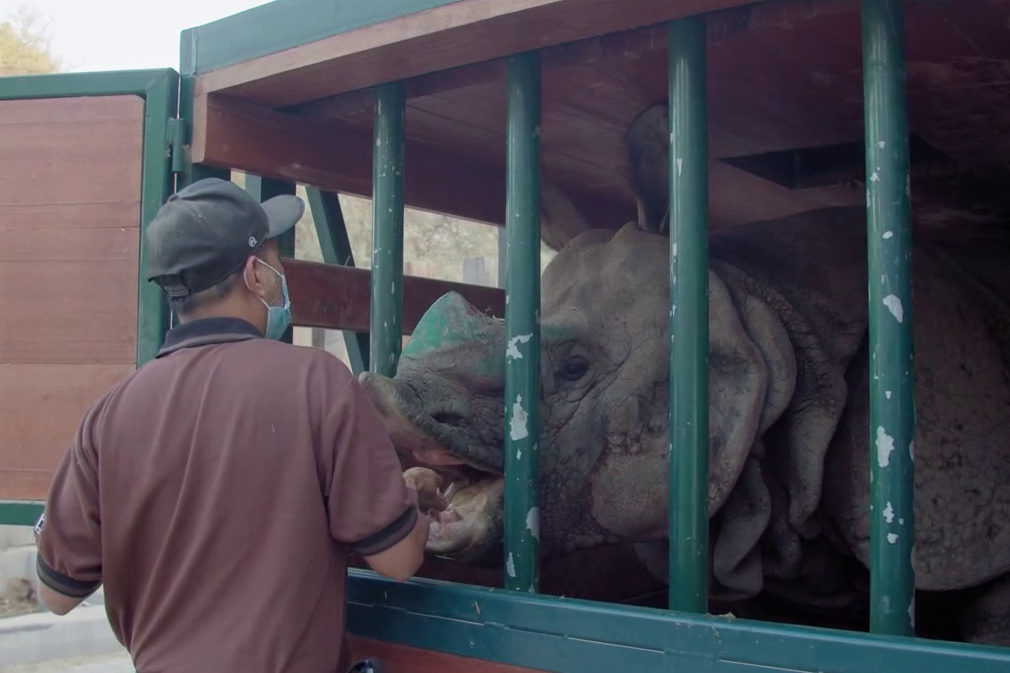
Assistant Curator of herbivores Yusoff Man, Wildlife Reserves Singapore, feeds Thulie through the transport crate at Al Bustan Zoological Centre, while awaiting transportation to Dubai Airport for the flight to Singapore. Yusoff fed the animals periodically to keep the animals comfortable and calm during the 8-hour flight.
PHOTO CREDITS: WILDLIFE RESERVES SINGAPORE
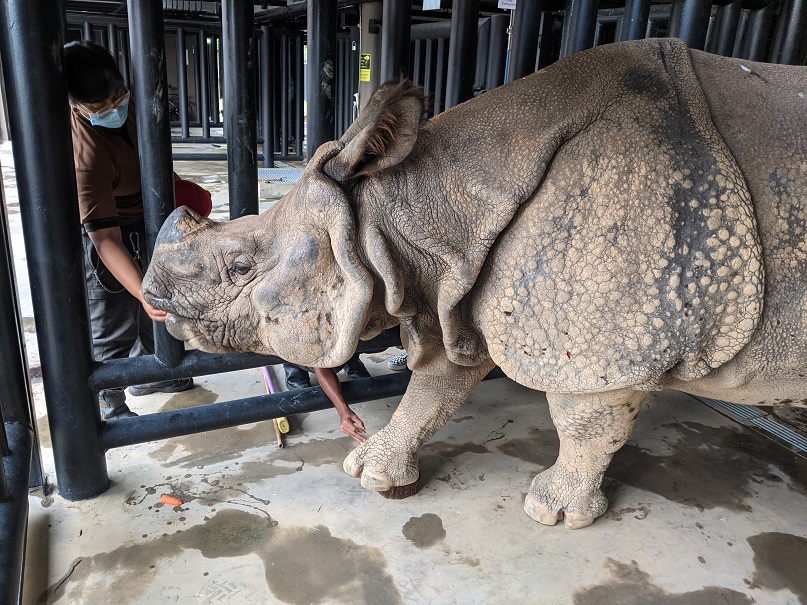
Night Safari keepers conducting blood draw conditioning on Thulie at the stables. The stables have been purpose-built for protected contact, where procedures are conducted through safety barriers for enhanced animal welfare.
PHOTO CREDITS: WILDLIFE RESERVES SINGAPORE
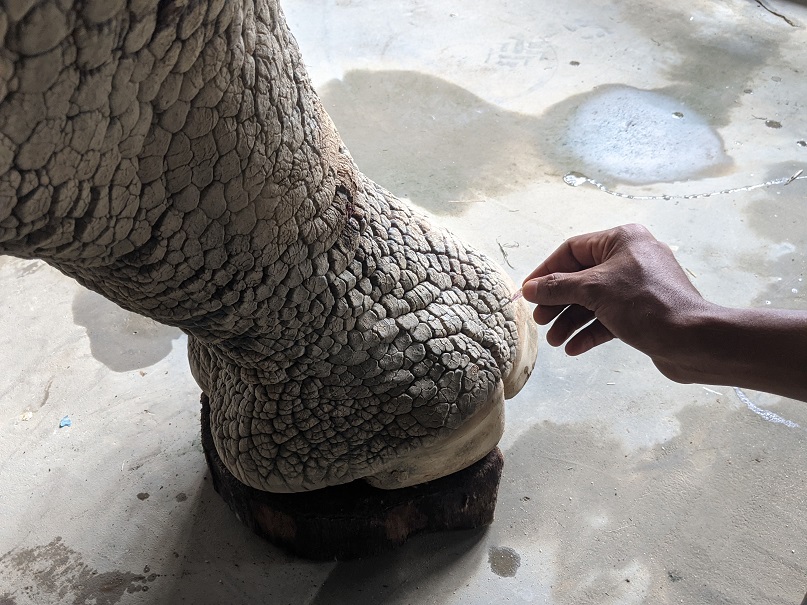
Keepers apply pressure using a blunt needle on Thulie’s skin. This is to get the animal used to the sensation while it stays still, to minimise stress when an actual blood draw procedure needs to be carried out.
PHOTO CREDITS: WILDLIFE RESERVES SINGAPORE

Thulie emerges from his mud wallow in his outdoor yard. Besides the public facing exhibit, the Indian rhinos also have open yard spaces to enjoy private time.
PHOTO CREDITS: WILDLIFE RESERVES SINGAPORE
